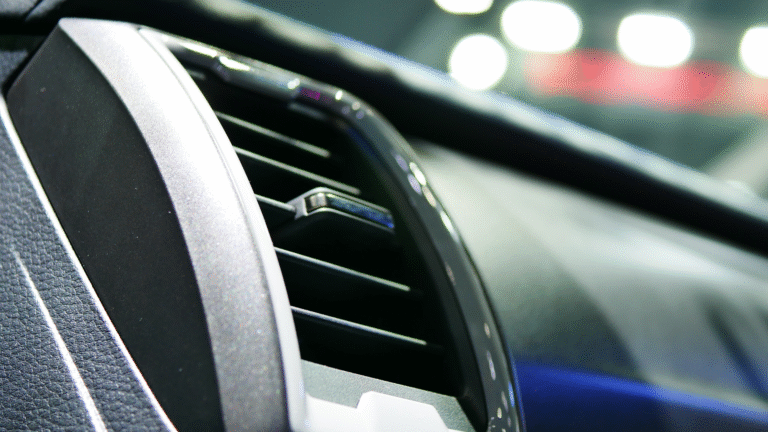When Australians think about electric vehicles (EVs), they often focus on battery range, charging speed, or environmental benefits. But there’s another piece of EV tech making a big impact—especially across Australia’s diverse climate zones: the heat pump.
Heat pumps may not get the spotlight, but they play a critical role in improving EV energy efficiency and passenger comfort. From the chill of a Canberra winter to the humidity of the Queensland tropics, heat pumps help your EV use less energy and go farther—no matter the weather.
—
Table of Contents
- What Is a Heat Pump in an EV?
- Why Traditional Heating and Cooling Systems Drain EV Batteries
- Benefits of Heat Pumps in Australian Climates
- EV Models in Australia with Heat Pump Technology
- Tips for Maximising Heat Pump Efficiency
FAQs
Conclusion
—
1. What Is a Heat Pump in an EV?
A heat pump is an energy-efficient system that moves heat rather than generating it. In electric vehicles, it replaces traditional resistive heaters and standard air-conditioning compressors with a more advanced thermal management system.
How it works:
- In winter: It extracts heat from outside air (even when it’s cold) and transfers it into the cabin and battery.
- In summer: It operates in reverse, acting like an air conditioner to cool the interior.
The result? Lower energy consumption compared to conventional systems, especially when managing cabin temperature or pre-conditioning the vehicle.
—
2. Why Traditional Heating and Cooling Systems Drain EV Batteries
In petrol and diesel cars, engine heat is reused to warm the cabin. But EVs don’t have internal combustion engines, so they rely on electric resistance heating—a process that consumes significant battery power.
For example:
- Heating an EV in cold conditions can reduce range by 20–30%.
- Using A/C in extreme heat can also significantly impact battery performance.
Heat pumps dramatically reduce this energy drain, helping maintain consistent driving range in all climates—a major benefit for drivers in rural or regional Australia.
—
3. Benefits of Heat Pumps in Australian Climates
🇦🇺 Australia’s climate is incredibly diverse, and heat pumps help adapt to that diversity.
🧊 In Cold Regions (e.g. ACT, Tasmania, Snowy Mountains)
- Improve battery efficiency and cabin comfort
- Maintain driving range during frosty mornings
- Reduce need for preheating via mains power
☀️ In Hot Regions (e.g. NT, Queensland, WA)
- Use less energy to cool the cabin on hot days
- Support efficient battery thermal management
- Reduce load on A/C systems during summer road trips
💨 For All Regions
- Quieter operation and more consistent cabin temperature
- Improved vehicle range in both summer and winter
- Reduced strain on the battery and improved lifespan
—
4. EV Models in Australia with Heat Pump Technology
Many EVs now include heat pumps—either as standard or optional. Here are a few available in the Australian market:
| EV Model | Heat Pump Availability | Notes |
|---|---|---|
| Tesla Model Y & 3 | Standard in latest models | Improves range in all conditions |
| Hyundai IONIQ 5/6 | Optional (varies by trim) | Offers full climate efficiency suite |
| Kia EV6 | Optional (GT-Line and GT) | Boosts real-world driving range |
| Nissan Leaf | Included in e+ models | Popular in colder climates |
| Polestar 2 | Standard on long-range models | Part of thermal pre-conditioning |
| MG4 Electric | Optional in some trims | Great for budget-conscious buyers |
When comparing EVs, check if the heat pump is included—especially if you live in a region with temperature extremes.
—
5. Tips for Maximising Heat Pump Efficiency
✅ Use Scheduled Climate Control
Pre-condition your EV while plugged in to avoid draining battery on the road.
✅ Set Cabin Temperature Moderately
Avoid extreme settings—heat pumps are most efficient around 20–22°C.
✅ Keep Windows Closed
This helps maintain thermal efficiency and reduces load on the system.
✅ Park in the Shade or Sun Intelligently
Park in sunlight during winter and in shade during summer to assist the heat pump’s efficiency.
✅ Maintain Software Updates
EV software updates often improve thermal management and efficiency algorithms.
—
FAQs
🌡️ Do all EVs have heat pumps?
No, but many newer models do—especially those designed for efficiency or extreme climates. Always check the spec sheet before buying.
🔋 Does using the heat pump affect driving range?
Yes, but much less than traditional electric resistance heating or standard A/C systems. Heat pumps help preserve range in both hot and cold conditions.
❄️ Are heat pumps useful in mild climates like Sydney or Perth?
Absolutely. Even in milder climates, heat pumps improve efficiency, reduce energy consumption, and provide consistent cabin comfort.
🚗 Is a heat pump worth the extra cost?
If you frequently drive in extreme heat or cold, yes. The added efficiency and comfort often justify the cost over time.
—
Conclusion
Heat pumps may be hidden under the bonnet, but they’re vital to your EV’s performance. As more Australians make the shift to electric, understanding features like heat pumps helps buyers choose smarter and drive farther.
Whether you’re in the snowy highlands of Tasmania or the sunbaked highways of Queensland, a heat pump can make your EV experience more comfortable, efficient, and sustainable.
🌡️ Considering an EV? Don’t overlook the heat pump—it could make all the difference on your next Aussie road trip.
—
Heat pumps in EVs improve range and comfort in hot and cold climates. Discover how this tech benefits Australian drivers across diverse regions.
